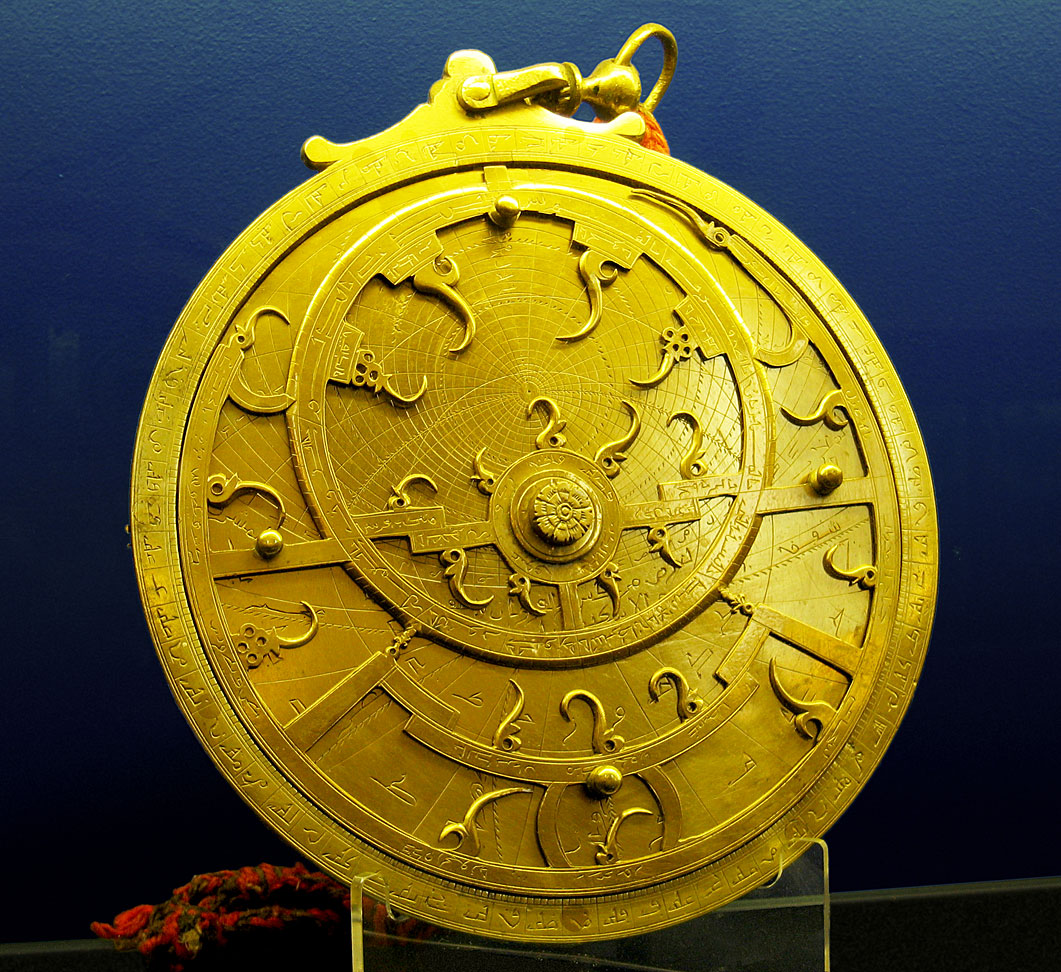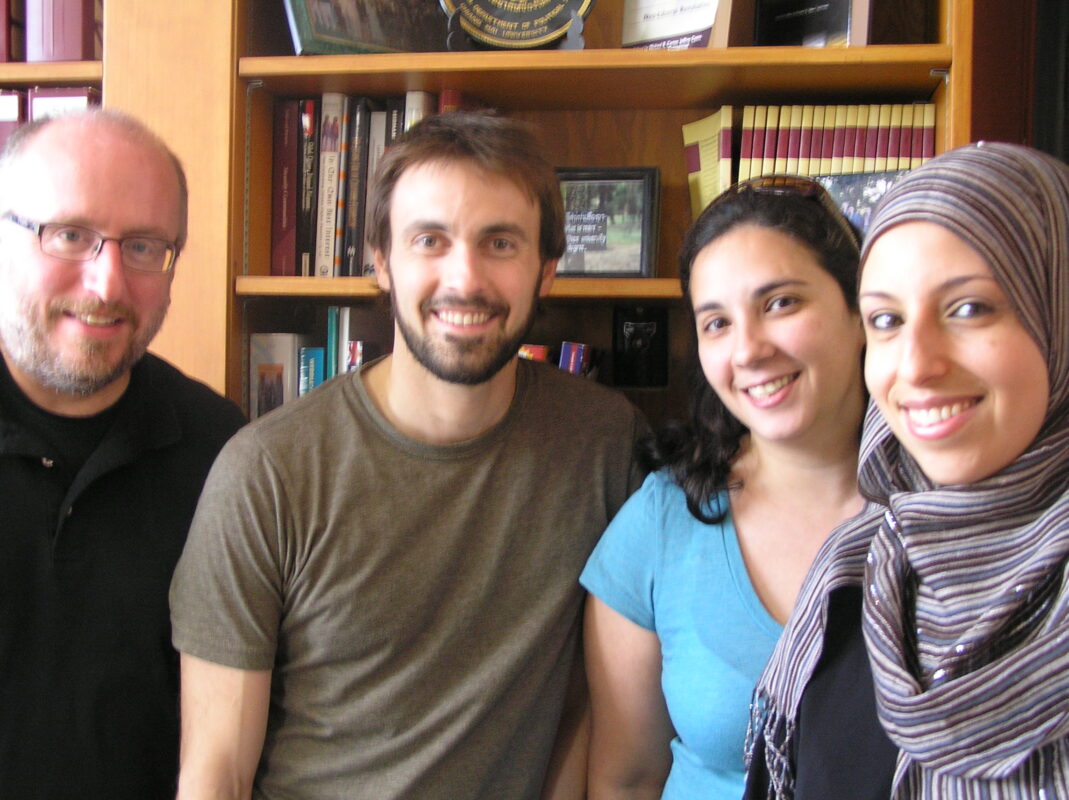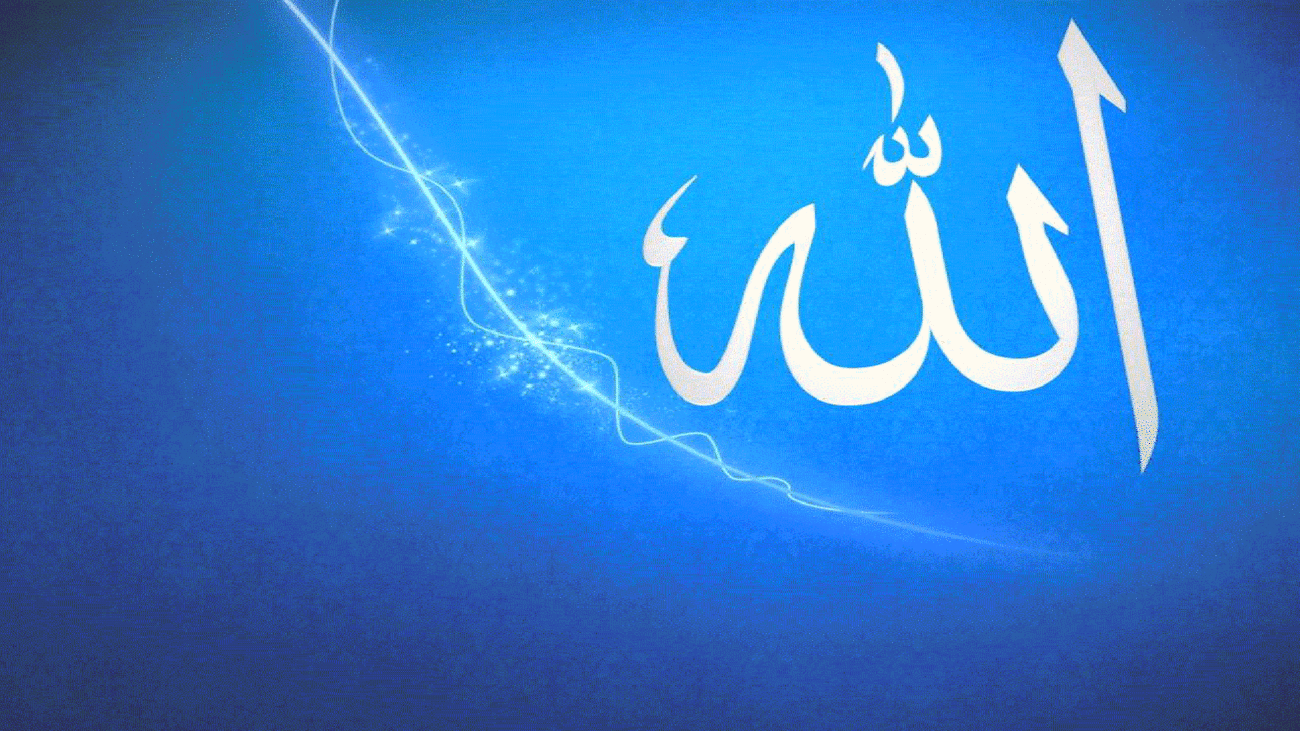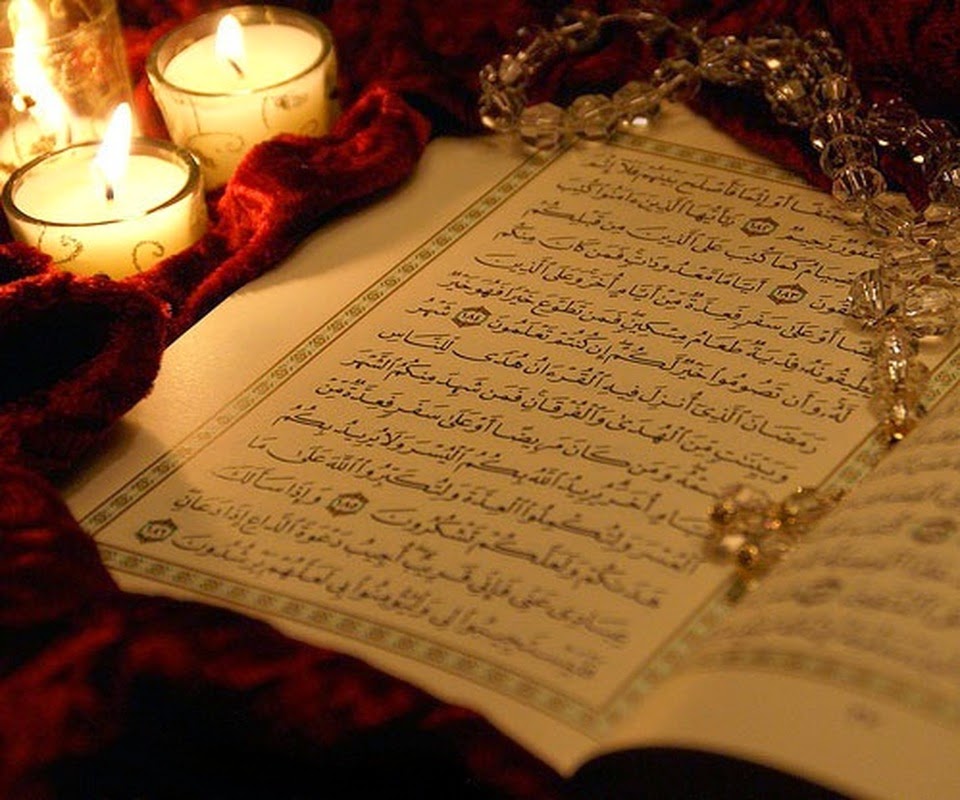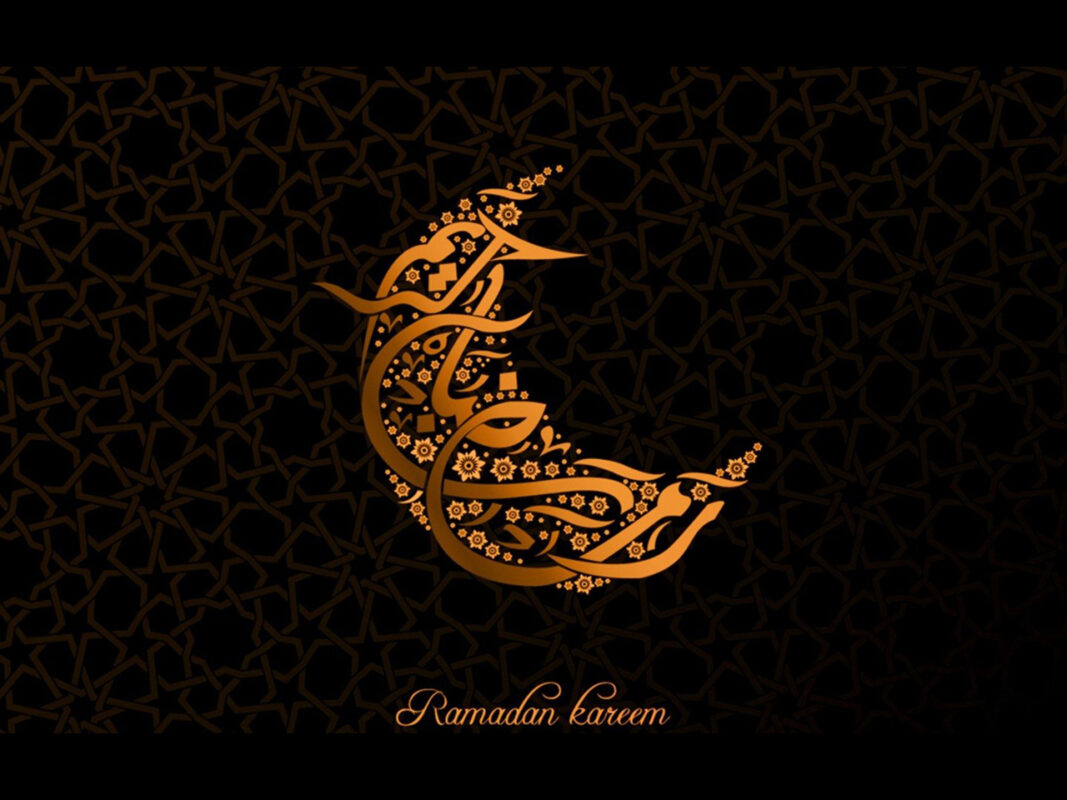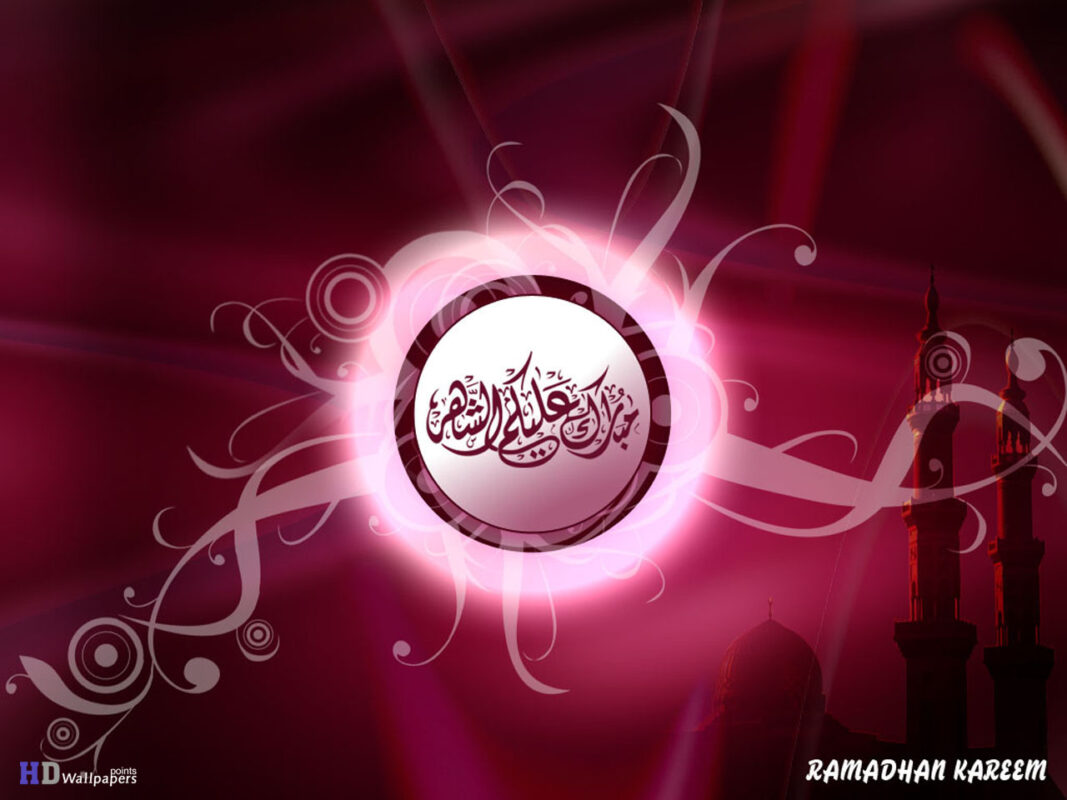Out of numerous contributions by Early Muslim scholars to the field of astronomy, the following can be listed:
Early Muslims precisely defined astronomy as a definite field of scientific research; translated available information and critically reviewed it; developed observing equipments (such as the telescope, the celestial mirror or armillary sphere, the quadrant, the astrolabe, etc.), astronomical tables, calculations and techniques; established a large number of observatories; innovated algebra and introduced applied mathematics for the first time to astronomy; invented the sciences of trigonometry, spherical trigonometry, algorithm, geometrical optics, spherical graphics and its applications in celestial observations; proved the spheroidal and the rotational movement of the Earth; invented longitudes and latitudes and very precisely measured the distance of a longitudinal degree; calculated the circumference, diameter and size of each of the Earth, the Moon, Mars, Jupiter and Saturn with great precision; introduced the Helio-centric of our solar system; estimated the mean orbit and the different altitudes of the sun; defined the nature and movements of many celestial bodies, calculated the degree of obliquity of the ecliptic; catalogued and named many stars and constellations, giving their coordinates and magnitudes, discovered the nebula Andromida, determined with wonderful accuracy the precession of equinoxes and the movements of both the solar apogee and the summer solstice, demonstrating that it is subject to the precession of the equinoxes and that, in consequence, the equation of time is subject to a slow secular variation; recorded the movements of the planets, and the condition of visibility of ~he new moon, and its distance from the earth, described the eclipses, the apparitions of comets; defined the exact movement of the sun with respect to other celestial bodies; marked for the first time the variations in the lunar altitudes in its orbit around the earth; calculated the length of both the solar and lunar years, of the seasons, the month and the day; named the constellations and the position of the Sun with respect to each one of them, designed various chronometers (sundials, sand glasses, candle-water – mercury – and mechanical – clocks), constructed elaborate astronomical tables and treatises, described and explained many phenomena such as the Zodiacal light, rainbows, lightning and thunder storms; constructed calendars 600 years before the Gregorian calendar, and are said to be even more accurate, introduced many Arabic names to the science of Astronomy which are still in use, etc. The names of distinguished Muslim astronomers and the titles of their works and analyses of their contributions can be found in books dealing with the “History of Science”, but I quote the following as example:
SELECTED EXAMPLES OF DISTINGUISHED MUSLIM ASTRONOMERS
- Al-Fazzari Ibrahim (D. 160 A.H.) and his son Muhammad (D.180 A.H.) who constructed the first Astrolabe wrote on the use of the armillary sphere and prepared tables according to the Hijri Calendar. At least six treatises written by Ibrahim Al-Fazzari in Astronomy are still intact.
- Al-Baghdady (2nd Century A-H.).
- Ibn Hayyan (D. 197 A.H.) who wrote 19 treatises about celestial bodies and 16 in astronomy.
- Sanad bin Aly (3rd Century A.H.) who wrote 5 books on mathematical astronomy.
- Al-Firghany (3rd Century A.H.) who developed and modified the sundial, and calculated the diameters of each of the Earth, the Moon, the Sun, Mars, Jupiter and Saturn with great precision… At least 3 of his written manuscripts on astronomy are still intact.
- Al-Khuwarizmy (D. 235 A.H.) The great astronomer, mathematician, geographer, historian, and the innovator of the science of ‘Algorism’. His book entitled Hisab AI-Jabre wa Al-Muqabalah” was translated into Latin by Gerard of Cremona, Robert of Chester and Adelard Bath and much later into English by F.Rosen (1831). This book introduced the science of Algebra to the Europeans and was used as the principal textbook for mathematics in their universities until the end of the 16th century A.C. Al-Khuwarizmy wrote 7 treatises on astronomy which have all been translated into Latin.
- Al-Marwazi (D. 250 A.H.) who wrote many treatises in astronomy, of which only 11 have survived.
- Al-Kindi (D. 252 A.H.) who wrote more than 265 manuscripts on different subjects, including astronomy and mathematics. At least 20 treatises on astronomy are still intact including one on calculating the distance between the Earth and the Moon, another on telescopes, a third on the engineering of the Astrolabe, a fourth on the Zodiacal light and a fifth on moving bodies and the true nature of light and darkness.
- Abou Ma’ashar (D. 264 A.H.) who wrote a tabulated astronomical treatise which remained for centuries one of the main sources of astronomical knowledge. Four of his works were translated into Latin by Johannes Hispatensis and Adelard of Bath.
- Al-Sarkhasi, lbn Al-Tayyeb (D. 286 A.H.) who wrote an astronomical treatise entitled “The Introduction to the profession of stellar observation”.
- Thabit bin Qurrah (D. 287 A.H.) who wrote more than twenty memoirs on astronomy and geometry, invented the sundial, the balance and wrote elaborately on the altitude of the Sun and the length of the solar year. His treatise on the balance was translated into Latin by Gerard of Cremona. He was followed in his profession (Astronomy, Geometry and Mathematics) by his Sons Ibrahim and Sinan, his grandsons Thabit bin Sinan and Ibrahim bin Sinan, and great-grandson Abou Al-Faraj. Besides his interest in Astronomy, Geometry and Mathematics, Thabit was a skillful physician, while Ibrahim showed his distinction in geometry. His quadrature of the parabola was the simplest ever made before the introduction of integral calculus.
- Al-Balancy (D. 296 A.H.) who wrote a large number of astronomical tables.
- Banu Musa Bin Shakir (Muhammad, Ahmad & Hassan) who lived during the 3rd Century A.H. and were outstanding researchers in the field of astronomy, geometry, mechanics and engineering. They calculated the mean movement of the Sun and other celestial bodies, ascertained with remarkable precision the obliquity for the ecliptic, and marked for the first time the variations in the lunar altitudes. They also determined with great accuracy the precession of the equinoxes and the movement of the solar apogee, calculated the size of the earth, invented the telescope, recorded the movements of heavenly bodies and wrote about the measurements of plane and spherical surfaces. This last work of theirs was translated into Latin by Gerard of Cremona, and their treatise on mechanics is still preserved in the Vatican.
- Al-Baalabakky (D. 300 A.H.) who has at least 2 preserved manuscripts on astronomy and orbits and the other on “the use of the armillary sphere”.
- Al-Tibreezy (D. 310 A.H.) of whose works at least 5 manuscripts on astronomy are still intact.
- Bin Hameed (Al-Aadamy) who lived towards the end of the 3rd and the beginnings of the 4th centuries A.H., and of whose works we know at least one astronomical treatise with tables (Zeej).
- Al-Madainy (Al-Alawi) who also lived towards the end of the 3rd and the beginnings of the 4th centuries A.H. and also has a large astronomical treatise with tables (Al-Zeej Al-Kabeer).
- Al-Battany (D. 318 A.H.) was the greatest astronomer of this time, and lived at Al-Raqqah (on the left bank of the Euphrates). His works on astronomy and spherical trigonometry influenced the whole of Europe during the middle Ages and the Renaissance and were repeatedly quoted by Copernicus in his book “De Revolutionibus Orbium Coelestium”. According to Ibn Al-Nadeem (1871-1872) we only know one of his numerous works that is still intact which is a treatise on astronomy with detailed tables (al-Zeej). This work was translated into Latin by both Robertus Retinensis and Plato Tiburtinus (in the first half of the 12th Century A.C. and was published in Nuremberg in 1537). It was later edited and translated into Italian by C.A. Nallino and J.M. Millas. In this book, Al-Battany determined with great accuracy the inclination angle of the ecliptic and the possibility of the annular eclipse, , die length (If the tropic year and of the seasons, the true and mean orbits of the sun; discovered the mobility of the solar apogee, as a result of the precession of the equinoxes which he accurately measured ( and mentioned that, in consequence, the equation of time must he subject to a slow secular variation), calculated the variation of the apparent angular diameter of the Sun, rectified orbits of the Moon and planets, and suggested a new, ingenius theory for the determination of the conditions of visibility of the new Moon. His excellent observations on lunar and solar eclipses were used by Dunthome 1749 A.C to determine the secular acceleration of motion of the Moon.
- Al-Harrany Al-Sabi’ey (D. 384 A.H.) of whose works we only know one tabulated treatise on astronomy.
- Al-Balkhy (D. 323 A.H.) who wrote more than 70 treatises on astronomy and geography.
- Al-Jealy (D. 350 A.H.) who wrote 6 known treatises and tables on astronomy.
- Al-Shareef AI-Baghdady (D. 375 A.H.) of whose astronomical works we only know one treatise with tables.
- Al-Soufy (D. 364 A.H.) who wrote an illustrated treatise on fixed stars, giving their magnitudes and coordinates, based on his own observations. It is considered the first star atlas to take cognizance of the nebula in the constellation Andromeda, and was translated into French. The book is of great importance even today, as it reveals the changes in magnitude undergone by a number of prominent stars in the course of ten centuries.
- Abou Al-Wafaa Al-Buzjany (D. 376 A.H.) who wrote extensively on algebra, mathematics, geometry, spherical trigonometry, and astronomy, introduced the use of the secant and the tangent in astronomical observations, and defined methods for finding the value of chords of arcs, and for constructing sine tables. At least 4 of his valuable works are still available, including a large treatise on astronomy.
- Abou Saqre Al-Qubaissy (D. 380 A.H.) who revised AlFirghanys work and wrote at least three astronomical treatises.
- Al-Majreety (D. 385 A.H.) who was one of the most eminent astronomers of Cordova. He revised and edited the works of both Al-Khuwarizmy and Al-Battany, and left at least 3 valuable works on astronomy.
- Ibn Younus Al-Sadafi (D. 399 A.H.) who wrote a tabulated treatise on astronomy that was translated into Persian, Greek, Mangolian and Chinese languages. He also invented the pendulum which was successfully used in measuring time during his celestial observations and in constructing mechanical clocks.
- Al-Kouhy (D. 405 A.H.) who wrote elaborately on the astrolabe geometry, spherical geometry and astronomy. He studied the movements of the planets, discovered the summer solstice and the autumnal equinox, and left at least 3 valuable works.
- Ibn Al-Samhe Al-Ghirnaty (D. 426 A.H.) who left behind 3 treatises on astronomy.
- Abou Al-Qasim Bin Al-Saffar (D. 426 A.H.) of whose work we know two major treatises on astronomy.
- Al-Kirmany, Abu Al-Hakam (D. 458 A.H.), who was an eminent mathematician, astronomer, engineer and surgeon. He studied astronomy at the hands of A1-Majreety and left a number of manuscripts in that area.
- Ibn Iraq (who lived during the late 4th and the early 5th centuries A.H.) and left a wealth of literature on astronomy of which we know at least 9 treatises.
- Al-Bayrouni (D. 443 A.H.) who is considered the most profound and original scientist in human history, with contributions in very many disciplines that were centuries ahead of his time. Among his astronomical contributions is the precise determination of the magnitude of both the earth’s radius and circumference, the scientific discussion of the then controversial rotation of the earth on its own axis, the accurate definition of latitudes and longitudes, the correct explanation of numerous astronomical phenomena like the Zodiacal light, the excessive speed of light as compared to sound and the much greater radius of the sun as compared to both moon and earth, among his comprehensive treatises are the one entitled “Al-Qanoun Al~Masa’udi Fi Al-Haya’at Wa Al-Nujoum”, and “Kitab Al-Tafheem Li Aw’ail Sanat Al-Tanjeem”. An English translation of the latter book, facing the Arabic text was published 1939 in London by Ramsay Wright. (His written works amount to about 180 manuscripts, some of which has been translated into many languages.
- Ibn Hayy (D. 456 A.H.) who wrote a tabulated treatise on astronomy.
- Al-Zarqaly (D. 480 A.H.) who was reputed for his talent in inventing and constructing astronomical equipments and tables, as well as contributions to the field of astronomy. He correctly determined the degree of inclination of the ecliptic within one minute of arc, and his works were translated into Latin, and were quoted by Copernicus in his book De Revolutionibus Orbium Coelestium.
- Al-Isfizary (D. 480 A.H.) who critically reviewed the works of Euclid and of Banu Musa Bin Shaker and wrote 3 manuscripts on geometry, surveying and mechanical contrivances.
- Bin Aflaj (who lived during the later years of the 5th and the earlier years of the 6th centuries A.H.) and wrote 9 manuscripts in the area of Astronomy.
- Omar Al-Khayyam (D. 516 A.H. 1123 A.C.) who together with Abd Al-Rahman Al-Khazini supervised the Nishapur observatory, collaborated in the reformation of the Persian calendar (which preceded the Gregorian calendar by 600 years and is said to be even more exact), and was one of the greatest mathematicians, astronomers and poets of his time.
- Al-Hakeem A1-Dany (D. 529 A.H.) who wrote on geometry (2 manuscripts), astronomy and astronomical equipments (2 manuscripts).
- Ibn Bajah (D. 530) who was an outstanding physician, philosopher, mathematician, botanist and astronomer. Some of his works are translated into both Spanish and English.
- Al-Badeea Al-Astrolaby Al-Baghdady (D. 534 A.H.) who wrote on astronomy and astronomical equipments two manuscripts at least.
- AI-Batroujy (D. 582 A.H.) who wrote a treatise on astronomy that was translated into Latin by Kalonymos ben David and into Hebrew by Moses bin Tibbon. Some of his original contributions were the discovery of the spinning movements of the planets.
- Al-Mosely (D. 639 AM.) of whose work we know two manuscripts on astronomy.
- Al-Asfouny (D. 649 A.H.) who wrote on both geometry and astronomy invented both the armillary sphere and the water-wheel and wrote in other fields.
- Al-Morrakeshy (D. 660 AM.) of whose astronomical writings we have at least two manuscripts: one on viewing the moon and the other on the measurement of time.
- Al-Saheb Al-Labboudy, Najm Al-Deen (D. 670 A.H.) who wrote two lengthy treatises on astronomy.
- Al-Tousi (D. 672 A.H. -1274 A.C.) the famous astronomer, mathematician, physicist, geologist, natural scientist, physician, philosopher and theologian, who wrote the “Al-khanian Astronomical Tables”, constructed the famous Maraghah Observatory and the one at Samarqand These were equipped with the best available instruments of the time, e.g. ecliptical, solisticial and equatorial armillary spheres, Mural quadranis, etc. The Maraghah Observatory also housed a very big library, which was described to contain more than 4,000,000 manuscripts. He wrote a number of astronomical treatises of which the most important is “Kitab Al-Tathkirah Fi ‘Ilm Al-Haya’ah” or “The Memoir of Astronomy”, which is a complete survey of astronomical knowledge until his time. This manuscript was a landmark in the development of astronomy, and hence was reviewed by a large number of authors and translated into several Eastern as well as Western languages. In the field of astronomy, Tousi also wrote:“The Cream of Astronomy” which is still extant in both Arabic and Persian; “The Stars Made Easy”; “On the Trajectory, Size and Distance of Mercury”; “Rising and Setting”; “On The Moving Sphere”; “On the size and distances of the Sun and the Moon”; “On the ascension of Stars”; “Spherics”;“Days and nights”; “Tazheer Al-Majesty”; “Research on the reflection and deflection of light rays””The Book of optics”.
- Al-Hakeem Al-Maghriby (D. 680 A.H.) who wrote elaborately on astronomy, and left at least 10 manuscripts in that area.
- Al -Shirazi (D. 709 A.H. – 1311 A.C.) who was Al-Tousi’s student and wrote a manuscript on Astronomy with the title “Nihayat Al-Idrak Fi Dirayat Al-Aflak” (or The Latest Knowledge in the Science of Planetary Orbits). Besides its main theme, astronomy, the book contains a wealth of knowledge on geometrical optics, like the nature of vision and the formation of the rainbow.
- Ibn A1-Shater (D. 777 A.H.) who wrote an elaborate, tabulated treatise on astronomy (Al-Zeej Al-Jadeed) from which Copernicus drew most of his information without acknowledging that. He is also credited for measuring the angle of inclination of the Zodiacal Sphere with great precision, and inventing a chronometric instrument for defining the exact time of prayer.
- Al-Majdy (D. 850 A.H.) who wrote 15 manuscripts on astronomy and elaborated on sighting the Moon, on Saturn, the luni-solar calendar, and the application of geometry in astronomy.
- Ulugh Beg (D. 853 A.H. – 1440 A.C.) who was interested in astronomy, published a stellar catalogue and tables, comparing his observations with those of previous workers such as AI-Sufi, and erected a large observatory at Samarquand, where a group of distinguished astronomers did work.
- Badre Al-Deen (D. 907 A.H.) who wrote 6 manuscripts on astronomy and geometry.
- Salah Al-Deen Qadhi Zadeh (D. 940 A.H.) who revised the astronomical work of Ulugh Beg and published his astronomical tables.
- Al-Kaslii (D. 851) LII. – 1436 At.) Who was the first director of the observatory at Samarquand, a great astronomer and mathematician, prepared a number of astronomical tables and maps including “Zeej Al-Khaqani”.
- Al-Qashji (D. 878 A.H. – 1474 A.C.) who prepared the astronomical tables of Ulugh Beg. These tables were edited, translated and published into both the Persian and Latin languages by J. Greaves & T. Hyde (1650-1665), and its introduction was translated into French by Sedillot (1846). Such work was highly treasured in Europe as an excellent source for astronomical information until the mid-nineteenth century A.C.
Source: Dr. Zaghloul El-Naggar [External/non-QP]

